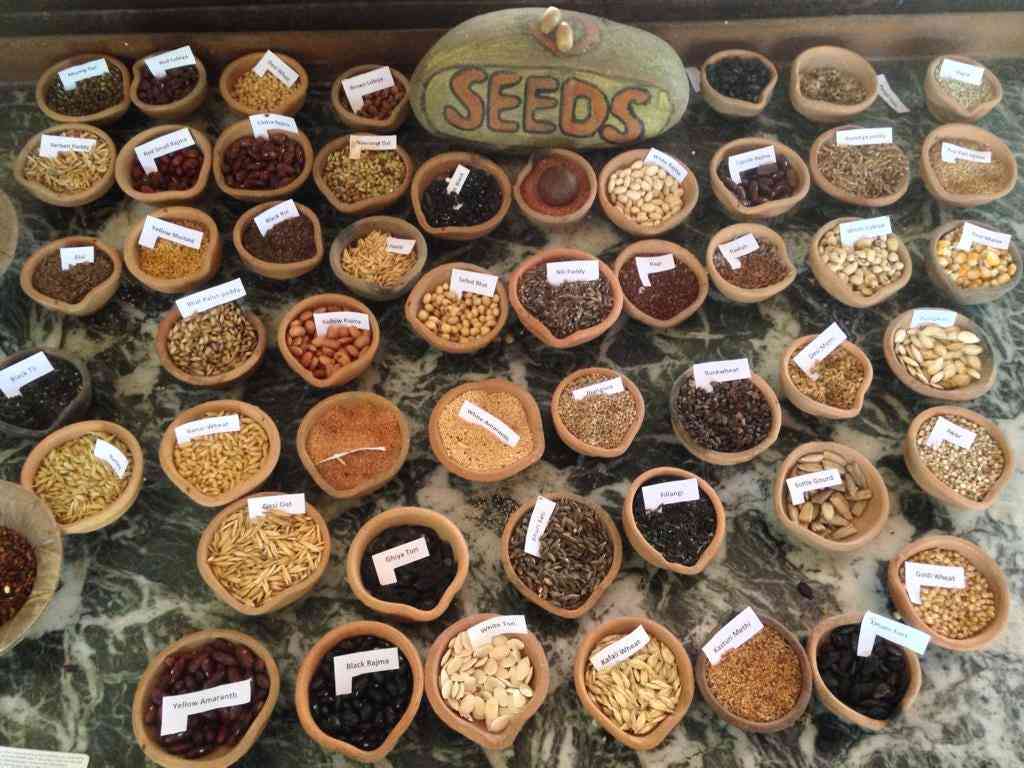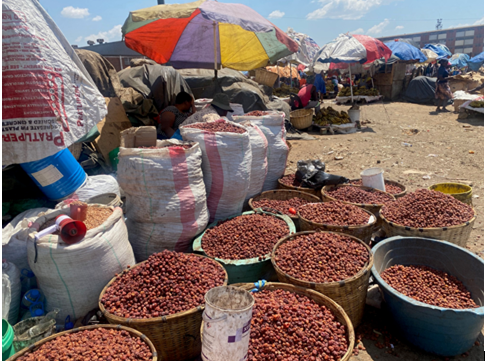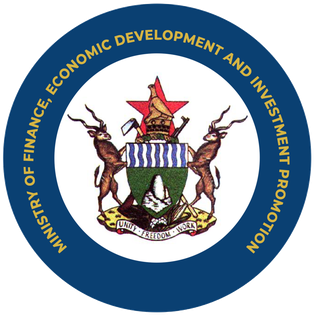
THE way African territorial mass food markets reproduce and strengthen the natural relationship between seed and food clarifies differences between agroecology and industrial food systems.
These markets demonstrate the extent to which indigenous seeds and food have multi-purpose uses, from seed to food and to beverages, among other uses.
While the industrial food system has tried to mimic this relationship, the main difference is that the industrial food production system has delinked seed from food by producing seed in laboratories and preserving it with chemicals.
Industrially-produced and chemically-preserved seed cannot be retained for reproduction.
For instance, when industrial maize is harvested, the seed cannot be replanted to produce more food.
In the same vein, vegetable seed cannot be retained from hybrid cabbage, onion and many other industrially-produced commodities that have been separated from original seed.
After consuming oranges or apples, farmers who decide to plant seed from these fruits do not harvest anything.
The industrial system has also designed some varieties to be only ideal for processing.
- Scattered seeds
- Attendance increased 35% at 5 Gokwe North schools, and here is why
- The natural wisdom of not treating seed and food as separate entities, thanks to agroecology and indigenous practices
- FAO, Zim strengthen seed certification framework
Keep Reading
Indigenous grains and legumes as seed and food
As demonstrated by what happens in African territorial markets, agroecology and indigenous practices do not delink seed from food.
For instance, seed harvested from indigenous vegetables like nyevhe, mowa, mutsine and others can be easily sold/bought for reproduction without laboratory intervention.
Finger millet, pearl millet, sorghum, yams like magogoya and many other indigenous commodities can be planted as seed and harvested as food.
In fact, seed and food from these commodities have similar characteristics in terms of shape, size, colour and other natural features.
The multi-purpose nature of finger millet implies it can be consumed raw, it can be processed into mealie-meal and can be fermented into traditional beverages.
In addition, finger millet and other small grains are sources of several varieties of traditional beverages ranging from less alcoholic mahewu to different kinds of beers as determined by multiple purposes.
Mahewu can be a household drink for a family while some beer can be consumed at community functions such as nhimbe used for collective planting or harvesting of crops.
Other kinds of beer are part of cultural functions such as bira and rainmaking ceremonies where industrial drinks are not appropriate.
The seed and food story of rapoko and other traditional grains is similar to Bambara nuts and groundnuts, where seed from food cannot be differentiated using the naked eye.
More importantly, the nature of the Bambara nut does not require additional industrial recipes in order to retain its taste. Boiled or roasted Bambara nuts remain the same food.
Likewise, the multi-purpose nature of groundnuts implies some can be consumed as raw or roasted into mutetenerwa that can also be consumed as a snack.
Traditional processing of groundnuts produces peanut butter, which also has multiple uses on the journey from seed to food.
Increasingly, peanut butter has become a critical substitute for industrially-processed cooking oil.
For instance, it can be added to porridge, it can be spread on bread or even consumed as it is.
But the same cannot be done with industrial cooking oil.
Indigenous fruits as seed and food
African territorial markets like Mbare are the only places where God-given indigenous fruits are sold in abundance.
Unlike industrial fruits from which consumers and farmers cannot derive seed, after enjoying an indigenous fruit you can go and plant it and it can germinate to produce more similar fruits.
This is the case with matohwe, mawuyu, nyii, masawu, mapfura and many others whose natural characteristics enable agroecological natural transitioning from seed to food.
However, while many African communities increasingly depend on indigenous fruits, African governments are not developing plantations of indigenous fruits like what is done with exotic fruits.
Indigenous poultry as seed and food
The increasing demand and presence of indigenous poultry in territorial markets shows how agroecology and indigenous food systems are alternatives to industrial production of chickens like broilers and layers.
While proponents of industrial poultry production have ensured the scientific knowledge on breeding and producing eggs is not known to farmers and consumers, in agroecology and indigenous practices, knowledge on poultry production, including natural chicken mating and fertilisation of eggs, is shared publicly through mass markets.
Why should knowledge and seed used to produce chickens be hidden from farmers and consumers?
Edible insects as seed and food
Edible insects like madora, magandari, ishwa, harurwa and many others regenerate through natural processes similar to what happens with indigenous grains, legumes and indigenous fruits.
The value of preserving natural forests
Deforestation caused by mining and monoculture are some of the activities undermining African food systems by depleting forests and destroying seed and natural food sources.
Countries that pay lip service to seed access and control are exposed to food and nutrition insecurity because food starts from seed.
How can African countries recognise, support and protect natural seed systems in the spectrum of vegetables, field crops, livestock, fruits and edible insects as well other systems like honey?
In most cases, re-purposing land undermines a country’s capacity to produce and retain seed.
For instance, planting 1 000 hectares of wheat on land that is suitable for small grains and groundnuts translates to losing the opportunity of enjoying small grains and groundnuts from that piece of land on which the wheat is planted. It is also a loss of food and seed.
For instance, if two tonnes of small grains were going to be harvested from each hectare, that would translate to 2 000 tonnes of small grains.
And if from that yield, 10% of that goes to seed, 1 800 tonnes remain as food.
This kind of cost benefit analysis should be done in answering critical questions like: How much does a country lose in the form of seed and food by re-purposing land industrial production and monoculture?
- Charles Dhewa is a proactive knowledge broker and management specialist











